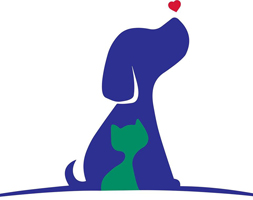Don't panic. Rapid response is important, but panicking can interfere with the process of helping your pet.
Take 30 to 60 seconds to safely collect and have at hand any material involved. This may be of great benefit to your vet and/or APCC toxicologists, as they determine what poison or poisons are involved. In the event that you need to take your pet to a local veterinarian, be sure to take the product's container with you. Also, collect in a sealable plastic bag any material your pet may have vomited or chewed.
If you witness your pet consuming material that you suspect might be toxic, do not hesitate to seek emergency assistance, even if you do not notice any adverse effects. Sometimes, even if poisoned, an animal may appear normal for several hours or for days after the incident.
Call the ASPCA Animal Poison Control Center
The telephone number is (888) 426-4435. There is a $65 consultation fee for this service.
Be ready with the following information:
• The species, breed, age, sex, weight and number of animals involved.
• The animal's symptoms.
• Information regarding the exposure, including the agent (if known), the amount of the agent involved and the time elapsed since the time of exposure.
• Have the product container/packaging available for reference.
Please note: If your animal is having seizures, losing consciousness, is unconscious or is having difficulty breathing, telephone ahead and bring your pet immediately to your local veterinarian or emergency veterinary clinic. If necessary, he or she may call the APCC.
Be Prepared
Keep the telephone number of the ASPCA Animal Poison Control Center-(888) 426-4435-as well as that of your local veterinarian, in a prominent location.
Invest in an emergency first-aid kit for your pet. The kit should contain:
• A fresh bottle of hydrogen peroxide, 3 percent USP (to induce vomiting)
• A turkey baster, bulb syringe or large medicine syringe (to administer peroxide)
• Saline eye solution
• Artificial tear gel (to lubricate eyes after flushing)
• Mild grease-cutting dishwashing liquid (for bathing an animal after skin contamination)
• Forceps (to remove stingers)
• A muzzle (to protect against fear- or excitement-induced biting)
• A can of your pet's favorite wet food
• A pet carrier
Always consult a veterinarian or the APCC for directions on how and when to use any emergency first-aid item.
Take 30 to 60 seconds to safely collect and have at hand any material involved. This may be of great benefit to your vet and/or APCC toxicologists, as they determine what poison or poisons are involved. In the event that you need to take your pet to a local veterinarian, be sure to take the product's container with you. Also, collect in a sealable plastic bag any material your pet may have vomited or chewed.
If you witness your pet consuming material that you suspect might be toxic, do not hesitate to seek emergency assistance, even if you do not notice any adverse effects. Sometimes, even if poisoned, an animal may appear normal for several hours or for days after the incident.
Call the ASPCA Animal Poison Control Center
The telephone number is (888) 426-4435. There is a $65 consultation fee for this service.
Be ready with the following information:
• The species, breed, age, sex, weight and number of animals involved.
• The animal's symptoms.
• Information regarding the exposure, including the agent (if known), the amount of the agent involved and the time elapsed since the time of exposure.
• Have the product container/packaging available for reference.
Please note: If your animal is having seizures, losing consciousness, is unconscious or is having difficulty breathing, telephone ahead and bring your pet immediately to your local veterinarian or emergency veterinary clinic. If necessary, he or she may call the APCC.
Be Prepared
Keep the telephone number of the ASPCA Animal Poison Control Center-(888) 426-4435-as well as that of your local veterinarian, in a prominent location.
Invest in an emergency first-aid kit for your pet. The kit should contain:
• A fresh bottle of hydrogen peroxide, 3 percent USP (to induce vomiting)
• A turkey baster, bulb syringe or large medicine syringe (to administer peroxide)
• Saline eye solution
• Artificial tear gel (to lubricate eyes after flushing)
• Mild grease-cutting dishwashing liquid (for bathing an animal after skin contamination)
• Forceps (to remove stingers)
• A muzzle (to protect against fear- or excitement-induced biting)
• A can of your pet's favorite wet food
• A pet carrier
Always consult a veterinarian or the APCC for directions on how and when to use any emergency first-aid item.



A Non-Profit 501(c)(3) Organization
